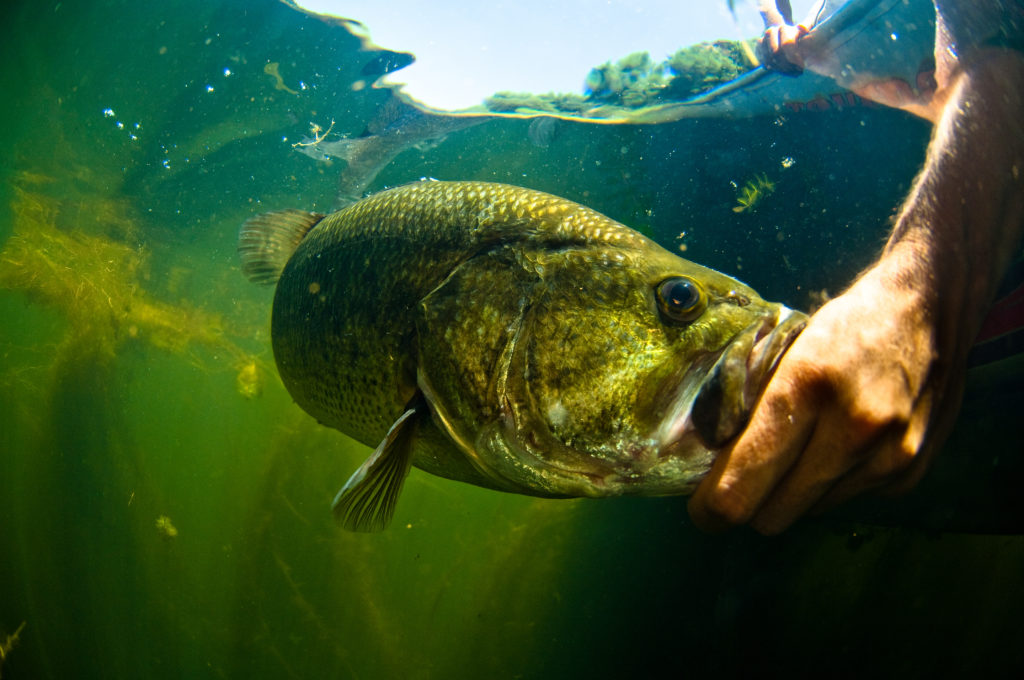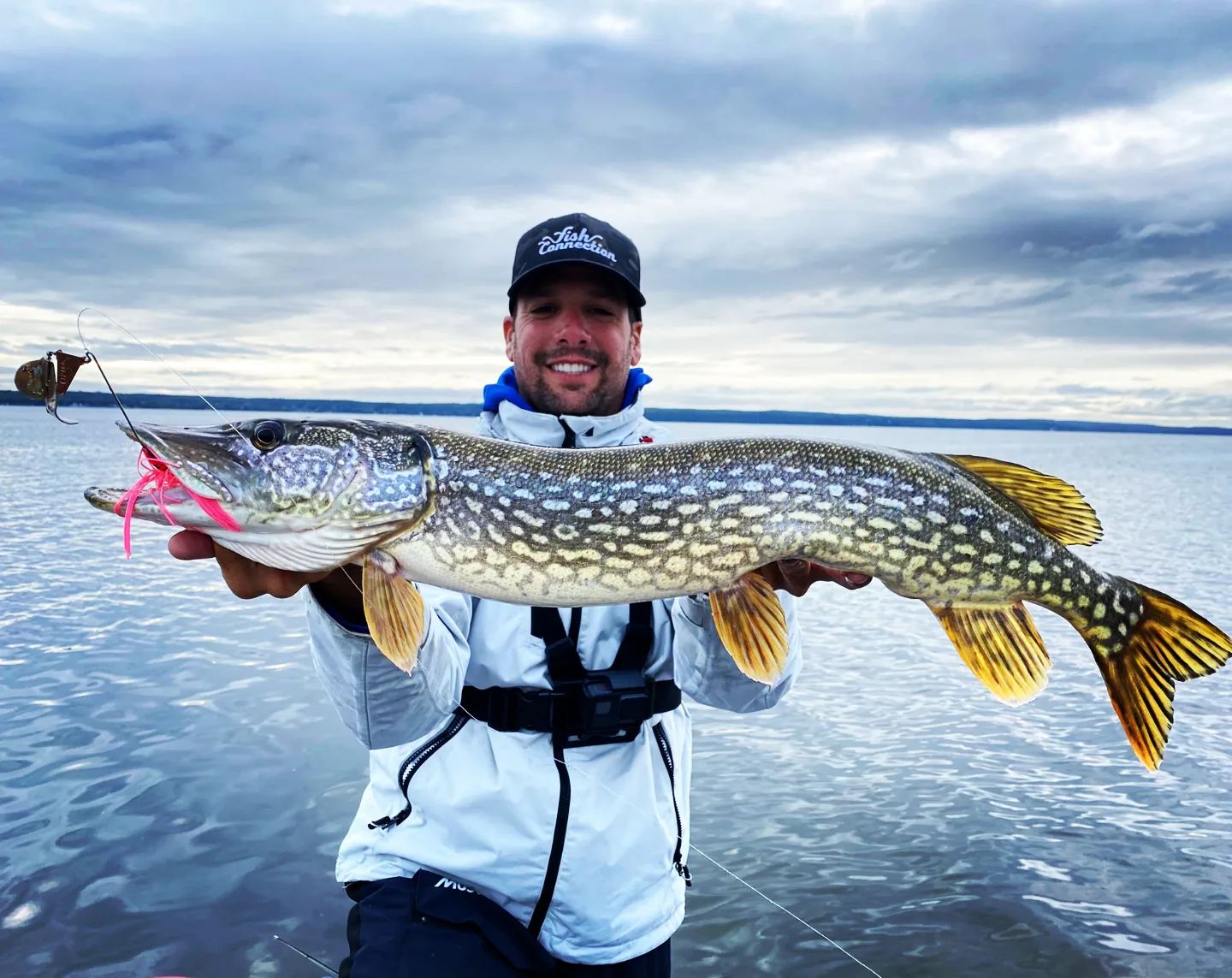
Knowing how to fish for pike is all well and good. It's also good to know how to hold a pike once it's in the net, it's even better! Pike fishing above all requires precise approaches, techniques and lures. However, it's also important to be able to handle your favourite fish with care. In the course of our many outings on the lakes and rivers of France, we have perfected our methods for holding a pike in complete safety. Here are our tips for handling and holding a pike with respect and efficiency.
Our article in brief:
This article details the essential techniques to know how to handle a pike in complete safety for you and the fish. Here are the key points:
- Having the right equipment Rubberised mesh landing net, gloves, long-nosed pliers and landing mat
- Precise handling : seized by the gills and body support
- Limit time out of the water
- Patience and observation are the watchwords for responsible and effective handling.
What equipment do you recommend for handling pike?
Before you even think about holding a pike, you need to prepare properly. Remember that the right equipment is the key to successful handling..
Here is a list of essential items for handling a pike, both for your own safety and that of the fish:
- A landing net with knot-free rubberised mesh. Other landing nets can damage fish fins and remove their protective mucus. We have noticed a clear difference in the vitality of the fish released when we use this type of landing net compared with conventional models.
- Protective gloves. This will prevent accidents if your pike struggles. Protective gloves are not a luxury, especially for large pike. They also give you a better grip. But be careful not to squeeze the fish too tightly!
- A damp landing mat. We insist: WET! This will avoid removing the mucus from the fish.
- Long nose pliers for unhooking. The long-nosed pliers are a life-saving tool for unhooking the lure without risking putting your hand in the pike's mouth. It's an investment that has proved indispensable in the course of our experiments.
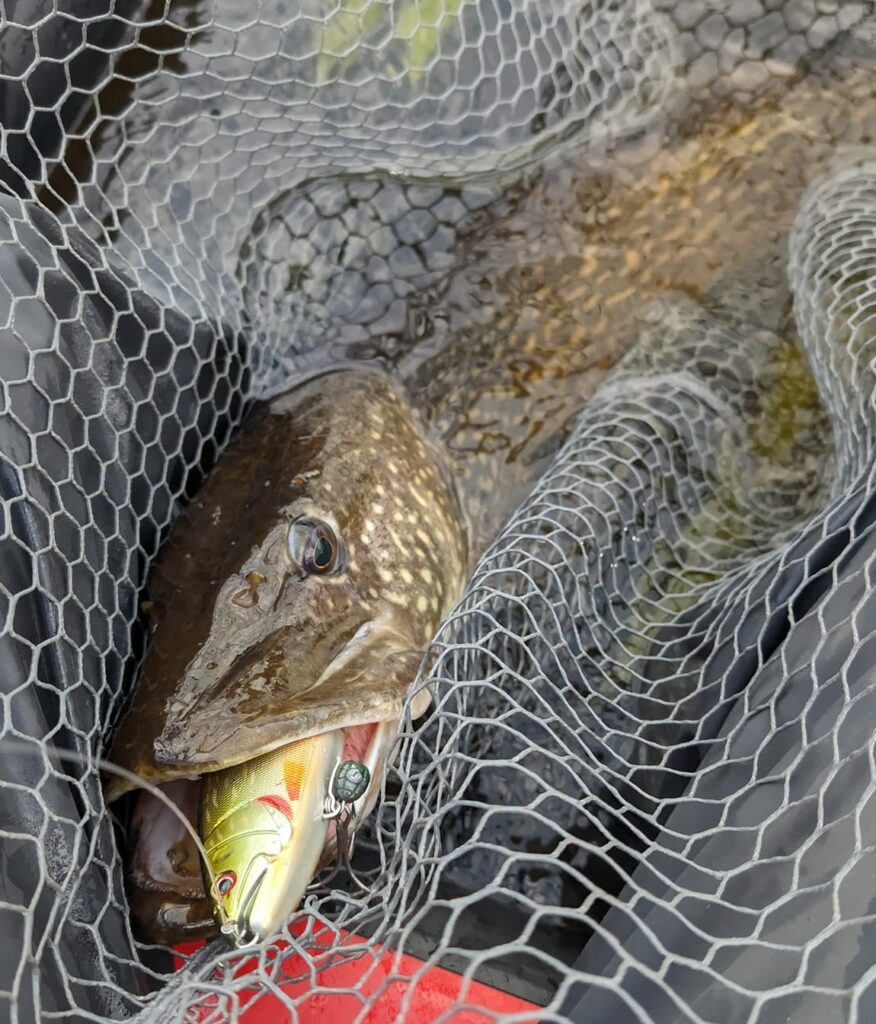
Safe techniques for gripping and holding a pike correctly
A pike is a carnivore as powerful as it is fragile out of the water, with over 700 razor-sharp teeth. Never forget these points once your fish is in the net. The first step before grabbing your pike is to get your hands wet. This simple action preserves the pike's protective mucus, essential to its survival.
Then follow these steps to grab a pike correctly:
- Wait for your fish to calm down in the net.
- Grab it by the gills.
- Slide four fingers between the operculum and the gill arches, without touching the gills.
- With your other hand, support the body of the fish horizontally.
This allows you to hold the pike firmly without risking injury. For small specimens, a grip behind the head using the opercules is sufficient.
Here's a quick reminder of how to grip and hold a pike correctly, depending on its size
| Pike size | Recommended gripping technique |
|---|---|
| Small (< 50 cm) | Grip on the back of the head |
| Medium (50-80 cm) | Gap grip + body support |
| Large (> 80 cm) | Gap grip + body support + gloves |
Best practice for holding a pike when taking a photo or releasing it into the water
The capture of a beautiful pike is often immortalised by a photo. On the other hand, it is vital to limiting time out of the waterparticularly for large subjects.
Firstly, prepare your camera in advance to reduce the stress on the fish. If you have a landing net, make it wait while you prepare everything you need. For a beautiful photo that respects the pike:
- Hold the fish vertically for presentation
- Take the photo quickly
- Above all, avoid placing the pike on a dry, rough or hot surface!
Release is just as important as catching. A badly released pike has little chance of survival. Here's our tried and tested method:
- Hold the pike in the water, facing the current
- Wait for it to regain its strength by moving back and forth.
- Let it go on its own, without throwing it away
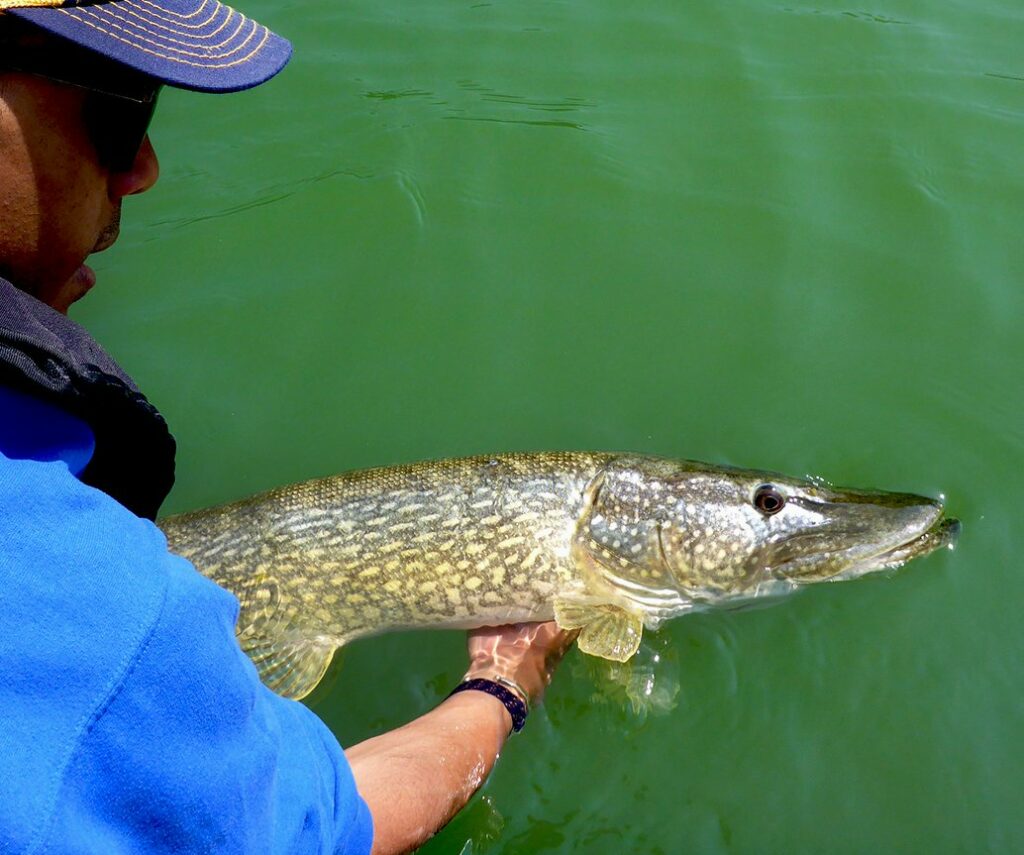
By applying this approach, we have seen an excellent survival rate for released pike. Once again, catching a pike is all well and good. But to know that this magnificent fish will continue to thrive in its natural habitat and to be able to fish it again a few years later... WHAT A HAPPY THING!
A few more tips for responsible handling
Beyond the basic techniques, certain subtleties make all the difference when it comes to handling pike.
Here are a few more tips for handling and holding a pike:
- Avoid using a fish grip. This can injure the pike's jaw.
- Be particularly careful with large specimens. They are more sensitive to stress. What's more, they are often females. To preserve the species, let's preserve them!
- In the event of a prolonged fight, allow your fish to recover before handling it.
Don't forget that patience is the mother of safety ! Don't hesitate to take a few extra seconds to let the fish calm down in the landing net before grabbing it. A calm pike is easier to handle and less prone to stress.
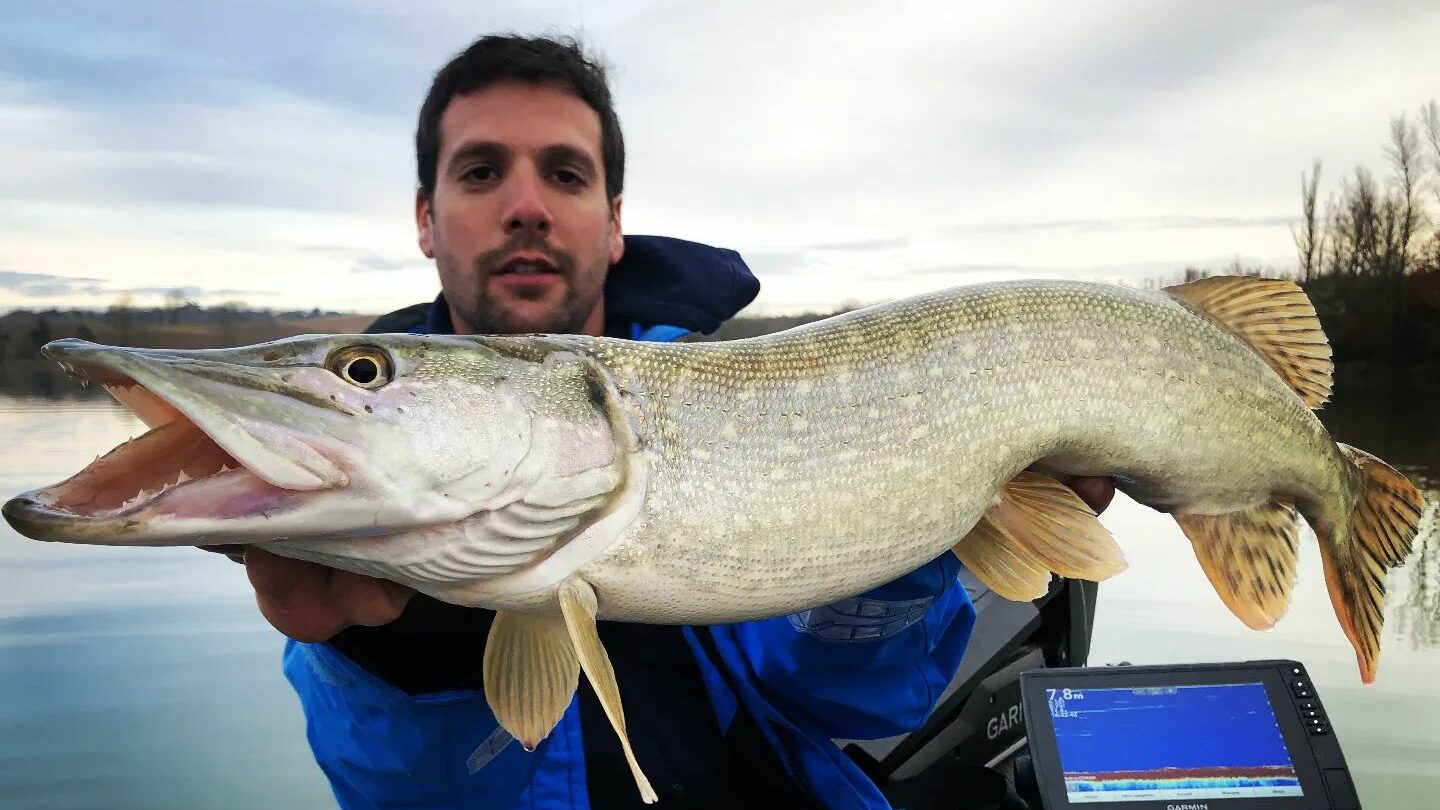
As responsible anglers, we are keen to pass on these good practices. During our outings, we always stress the importance of these actions to preserve the resource. It's by respecting these magnificent fish that we can ensure the long-term survival of our passion.
By applying these techniques and remaining attentive to the well-being of the fish, you will not only become a better angler, but also a true ambassador for responsible fishing. Every pike correctly handled and released is a victory for the conservation of our aquatic ecosystems.



